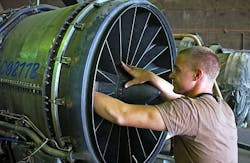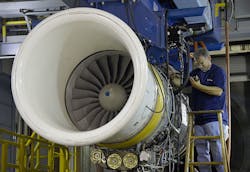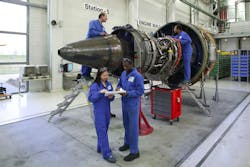1.5 million pilots, aircraft technicians needed through 2035 to support growing global fleet, Boeing predicts
OSHKOSH, Wis., 29 July 2016. Roughly 1.5 million pilots and aircraft technicians are needed over the next 20 years, Boeing’s (NYSE:BA) 2016 Pilot and Technician Outlook forecasts, to support the world's growing commercial airplane fleet.
Boeing forecasts that between 2016 and 2035, the global commercial aviation industry will require approximately:
617,000 new commercial airline pilots
679,000 new commercial airline maintenance technicians
814,000 new cabin crew
The 2016 outlook shows a growth of 10.5 percent for pilots over the 2015 outlook and 11.3 percent for maintenance technicians. New pilot demand is primarily driven by new airplane deliveries and fleet mix, while new technician demand is primarily driven by fleet growth.
"Cabin crew are an integral part of operating an airline, and while Boeing does not train cabin crew like pilots and technicians, we believe the industry can use these numbers for planning purposes," says Sherry Carbary, vice president, Boeing Flight Services.
The outlook represents a global requirement for about 31,000 new pilots, 35,000 new technicians, and 40,000 cabin crew annually.
Projected demand for new pilots, technicians and cabin crew by global region for the next 20 years is approximately:
Region | New Pilots | New Technicians | New Cabin Crew |
Asia-Pacific | 248,000 | 268,000 | 298,000 |
Europe | 104,000 | 118,000 | 169,000 |
North America | 112,000 | 127,000 | 151,000 |
Latin America | 51,000 | 50,000 | 51,000 |
Middle East | 58,000 | 66,000 | 92,000 |
Africa | 22,000 | 24,000 | 27,000 |
Russia / CIS | 22,000 | 26,000 | 26,000 |
The Asia-Pacific region comprises 40 percent of the global need due to the growth in the single-aisle market which is driven by low-cost carriers, while North America is the result of new markets opening in Cuba and Mexico, and demand in Europe has increased as a response to a strong intra-European Union market.
Search the Aerospace & Defense Buyer's Guide
You might also like:
Subscribe today to receive all the latest aerospace technology and engineering news, delivered directly to your e-mail inbox twice a week (Tuesdays and Thursdays). Sign upfor your free subscription to the Intelligent Inbox e-newsletter at http://www.intelligent-aerospace.com/subscribe.html.
Connect with Intelligent Aerospace on social media: Twitter (@IntelligentAero), LinkedIn,Google+, and Instagram.
Intelligent Aerospace
Global Aerospace Technology NetworkIntelligent Aerospace, the global aerospace technology network, reports on the latest tools, technologies, and trends of vital importance to aerospace professionals involved in air traffic control, airport operations, satellites and space, and commercial and military avionics on fixed-wing, rotor-wing, and unmanned aircraft throughout the world.



